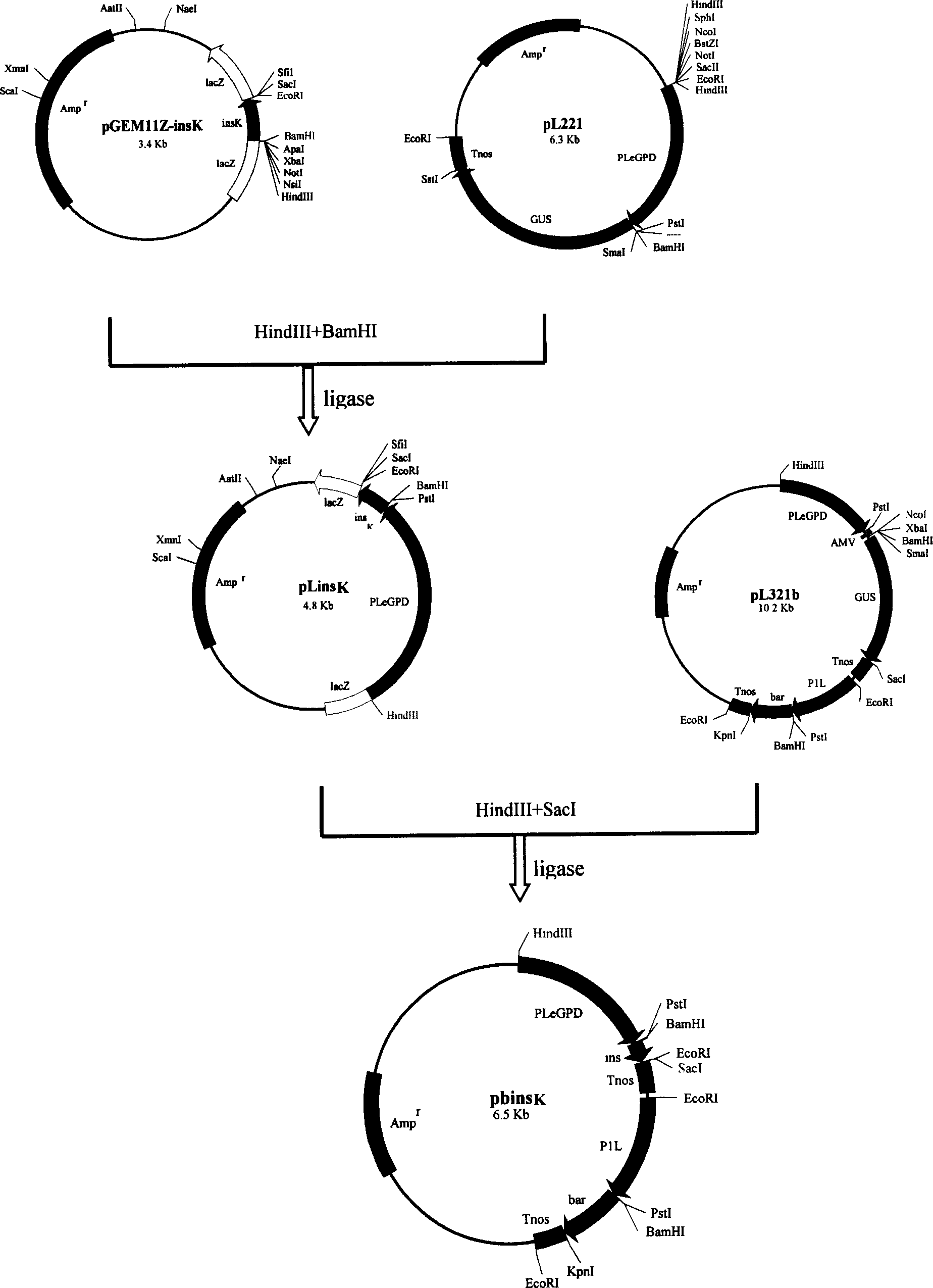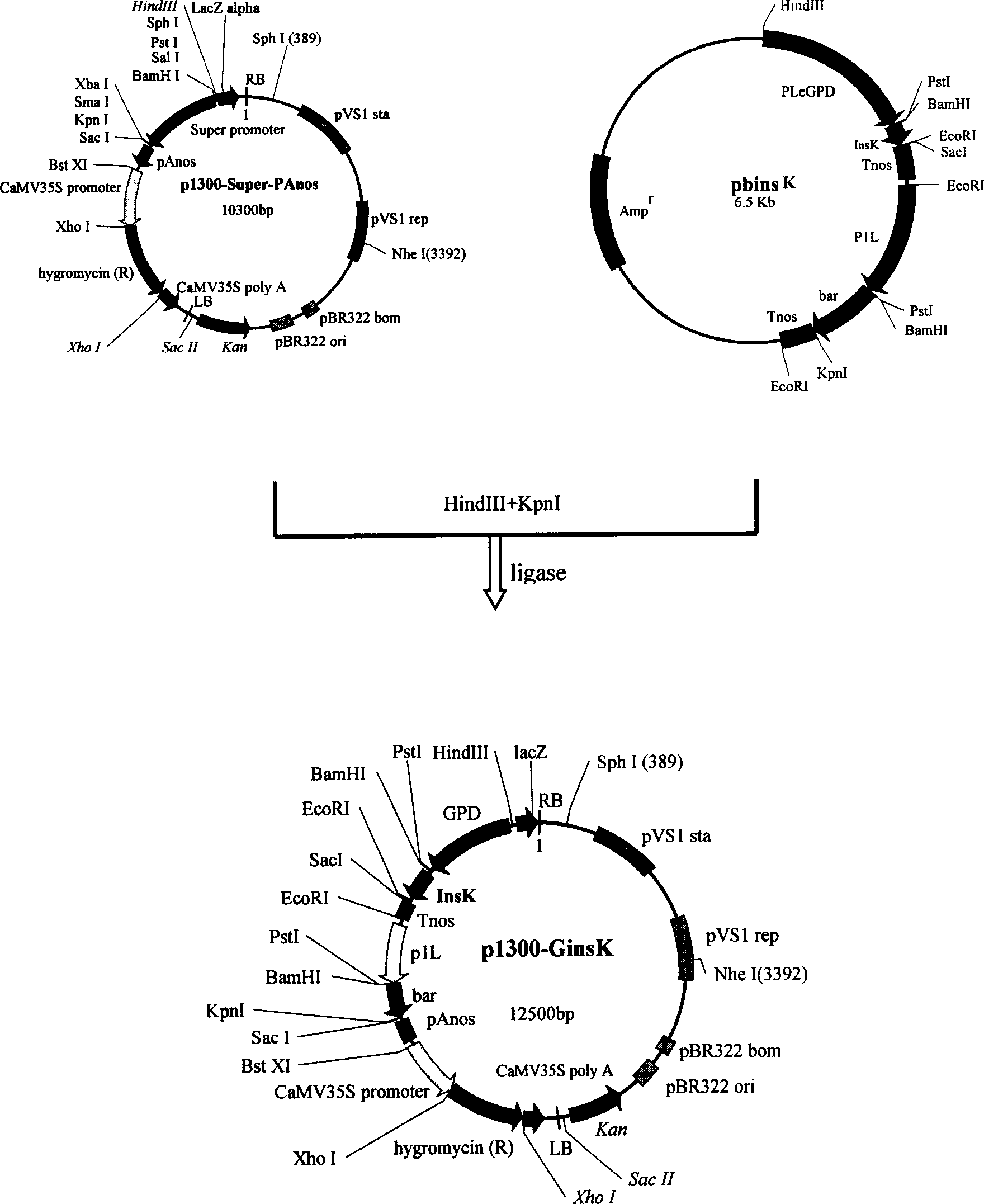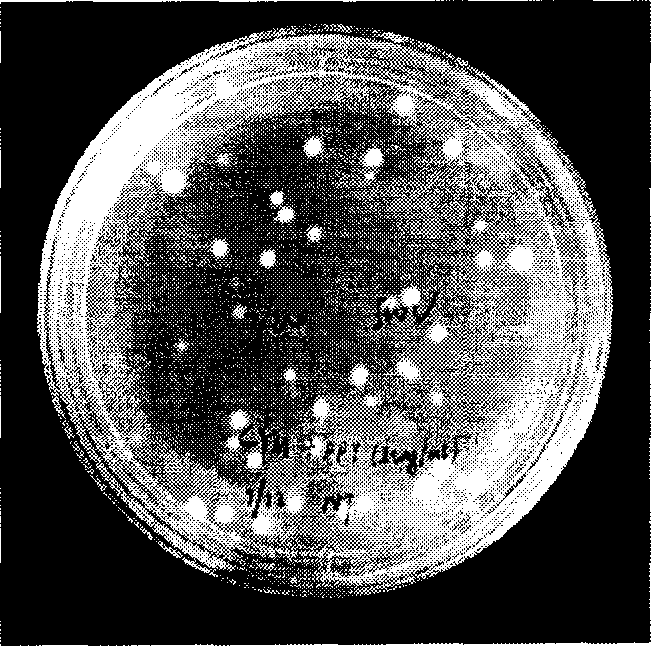Method for expressing human insulin for reducing blood sugar by transgenic lucid ganoderma
A human insulin, transgenic technology, applied in other methods of inserting foreign genetic materials, gene therapy, pharmaceutical formulations, etc., can solve the problems of skin allergy and neuralgia, gene deletion, insufficient secretion of main and companion insulin, and reduce blood sugar levels. Effect
- Summary
- Abstract
- Description
- Claims
- Application Information
AI Technical Summary
Problems solved by technology
Method used
Image
Examples
Embodiment 1
[0074] Cloning of embodiment 1 InsK gene:
[0075] According to the situation of codon usage in plants provided by Murray E.E. et al., it is speculated that plants prefer codons. The double strand of the human proinsulin analogue gene InsK is divided into 8 segments, so that one of the 5' ends of the two strands is slightly shorter and can be used as a primer for PCR reactions, and the other 3' end is slightly longer, overlapping each other and covering the entire length of the gene. Pay attention to try to end with G and C when segmenting.
[0076] serial number
sequence
No.1
5'-GATCCATGTT CGTTAACCAA CACC-3'
No.2
5’-TTTGCGGATC TCACCTTGTT GAGGCTCTTT ACCTTGTTTG CGGAGAGAGG GGATTC-3’
No.3
5’-TTCTACACCC CAAAGACCGG AGGACCATCT GGAGGAGGAA TCGTTGAGCA ATG-3’
No.9
5’-CTGCACCTCT ATCTGCTCTC TTTACCAACT TGAGAACTAC TGCAACAAGG ACGAGCTTTA AG-3’
No.10
5'-AATTCTTAAA GCTCGTCCTT GTTGCAGTAG TTCTC-3'
No.6
5'-AAGTTGGTAA A...
Embodiment 2
[0149] Example 2 Construction of Ganoderma lucidum expression vector pbinsK:
[0150] The pL221 plasmid was completely digested with HindIII and BamHI, a 1.4kb fragment containing the PLeGPD promoter was excised from it, the small fragment was recovered, and the fragment was ligated to the pGEM11Z-insK plasmid that was also digested with HindIII and BamHI and the large fragment was recovered In , the successfully constructed plasmid was named pLinsK. Use HindIII and SacI to excise a fragment of about 1.6 kb containing GPD-insK from the pLinsK plasmid, and connect this fragment to the pL321b plasmid that is also digested with HindIII and SacI and recover a large fragment, and the successful construction of the plasmid is named for pbinsK. The construction process is attached figure 1 .
[0151] During the operation, plasmid extraction, enzyme digestion, recovery, connection, cell transformation, enzyme digestion identification and PCR identification of recombinant plasmids w...
Embodiment 3
[0153] Example 3 Construction of ganoderma lucidum expression vector p1300-GinsK:
[0154] Completely digest the pbinsK plasmid with HindIII and KpnI, cut out a 3.4kb fragment, recover the fragment, and connect the fragment to the p1300-Super-PAnos plasmid that is also digested with HindIII and KpnI and recover a large fragment, and the construction is successful The plasmid was named p1300-GinsK. The construction process is attached figure 2 .
[0155] During the operation, plasmid extraction, enzyme digestion, recovery, connection, cell transformation, enzyme digestion identification and PGR identification of recombinant plasmids were all carried out according to the steps described in Example 1.
[0156] The initial plasmid p1300-Super-PAnos used in this construction process was donated by the laboratory of Professor StantonB.Gelvin of Purdue University in the United States and kept in this laboratory.
PUM
| Property | Measurement | Unit |
|---|---|---|
| diameter | aaaaa | aaaaa |
Abstract
Description
Claims
Application Information
 Login to View More
Login to View More - R&D
- Intellectual Property
- Life Sciences
- Materials
- Tech Scout
- Unparalleled Data Quality
- Higher Quality Content
- 60% Fewer Hallucinations
Browse by: Latest US Patents, China's latest patents, Technical Efficacy Thesaurus, Application Domain, Technology Topic, Popular Technical Reports.
© 2025 PatSnap. All rights reserved.Legal|Privacy policy|Modern Slavery Act Transparency Statement|Sitemap|About US| Contact US: help@patsnap.com



